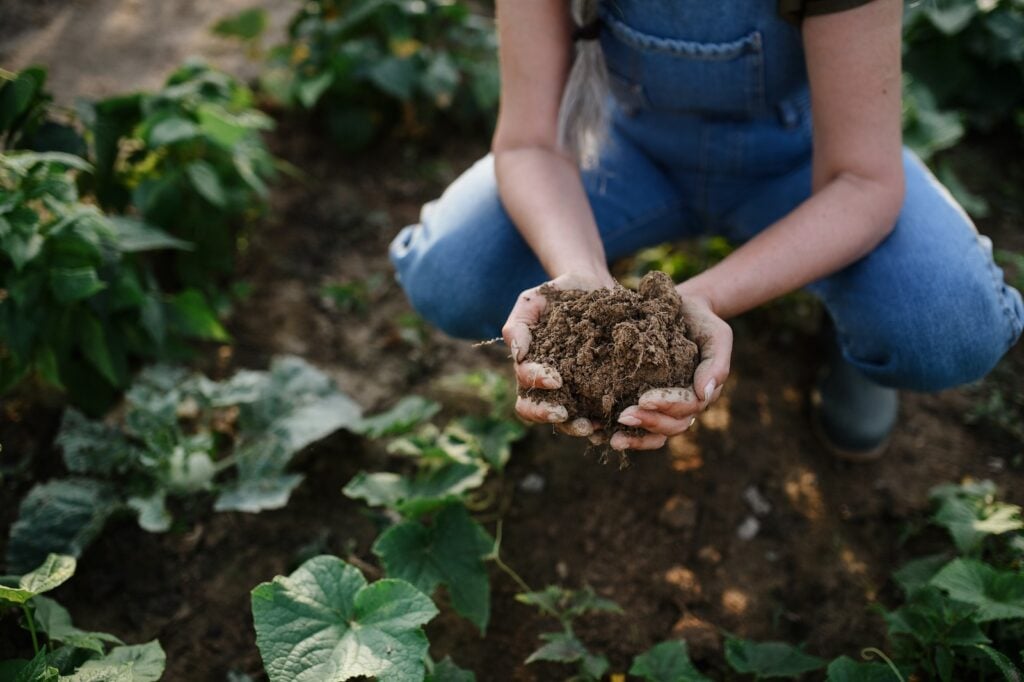Regenerative Agriculture and the Future of Food
Regenerative agriculture is a natural farming method that focuses on restoring soil health. Rich, replenished soil can improve food nutrition, support biodiversity, and ease the effects of climate change. This type of farming helps us keep future generations fed, while leaving them an earth that is thriving.

This isn’t exactly a new philosophy. Regenerative practices have been used for generations, long before factory farms and mono-crop systems came into style. With a sustainable approach, this type of land management was used by Indigenous Americans well before European settlers arrived.
“Nearly every other solution to the climate, water, biodiversity, and human health crises are just a way to go off the proverbial cliff slower,” explains Finian Makepeace, Co-Founder of Kiss the Ground and Producer of Kiss the Ground and Common Ground.
The Benefits of Regenerative Farming Practices
As Finian explains, the positive impacts of soil regeneration can be felt world-wide as land managers large and small make holistic changes to their farming and gardening.
Improving soil health can increase food production as well as combat the effects of climate change since healthy soil stores more carbon dioxide. And food grown in depleted soil is not as vitamin and mineral-rich as food grown in healthy soil.
Some other benefits of leaning into this method are:
- Balanced ecosystems
- Enhanced biodiversity
- Improved farm productivity
- Reduced greenhouse gas emissions
- More nutritious foods
- Long-term land health
- Reduced need for chemical use
- Sustainable global food system
- Regional food and water security
- Increased resilience to fire, drought, and flooding
- Stability in supply chains
The Six Principles of Regenerative Agriculture
These are the guiding principles of regenerative farming, and the decisions made for each farm should work in harmony with the natural processes taking place in the ecosystem.
- Context: Every farm is unique. Regenerating land depends on various factors like environment, crops, livestock, and resources. A holistic approach is essential.
- Least Disturbance: Practices like no-till farming, reduced chemical use, and minimizing soil compaction help maintain soil health.
- Living Roots: Keeping roots in the ground maximizes photosynthesis, feeding soil microbes and improving soil structure.
- Armor the Soil: Protect the soil with cover crops, crop residue, mulch, or wood chips to prevent erosion and maintain a stable temperature.
- Increase Biodiversity: A diverse mix of plants and animals enhances both above- and below-ground ecosystems, making the land more resilient.
- Animal Integration: Animals play a crucial role in nutrient cycling and regenerating landscapes.
The Four Key Practices for Soil Regeneration
These regenerative soil practices are intended to be as similar to nature as possible and are managed in a way that allows flexibility while considering the entire ecosystem. Regenerative agriculture is similar to permaculture (a way to grow food while working with nature instead of against it) but focuses specifically on soil health for farm production.
1. No Tillage
The practice of not tilling leaves the soil undisturbed, which prevents erosion and keeps the organic matter dispersed in the soil. This leaves the living roots intact in the soil with diverse crop rotations, making for nutrient rich soil.
2. Cover Crops
Planting cover crops like legumes and grasses that are intended to cover and return nutrients to the soil rather than for harvest helps prevent soil erosion, and increases soil fertility. They add organic matter back into the soil, and retain water making for a healthy ecosystem and nutrient dense soil. Using cover crops and crop rotation helps reduce weeds and the need for chemicals too!
3. Avoid Chemicals
Using herbicides and pesticides kills so many organisms that are needed for healthy and fertile soil. While it may kill pests and weeds, another problem is that some of them are proven to cause cancer in humans.
Using companion planting and other natural methods to control pests allows a balanced ecosystem without the use of harmful chemicals. It also allows beneficial insects to thrive, while producing healthier food. Chemical-free farming is also a huge benefit to the environment!
4. Planned Grazing
Planned grazing is an important part of regenerative agriculture for farms with livestock. It essentially mimics natural livestock grazing patterns, improving grass and soil health. It makes livestock a working part of the natural ecosystem and helps soil regeneration.
Small-Scale Regenerative Agriculture
This type of farming can work on both a small and large scale – meaning you can implement in your own garden.
Here are some small-scale ideas to incorporate and support the movement at home:
- Plant diverse garden crops with a companion planting method, so no tilling is required.
- Plant cover crops every other row, or one garden bed at a time to maximize living roots in your soil.
- Create a pollinator garden to help beneficial insects thrive.
- Compost to add to your soil health.
- Feed your soil with compost tea.
- Plant trees and shrubs to provide nesting space for birds.
- Provide a water source for insects and birds, like a bee bath, bird bath, or pond. Dragonflies, birds, and fish will help reduce unwanted insects.
